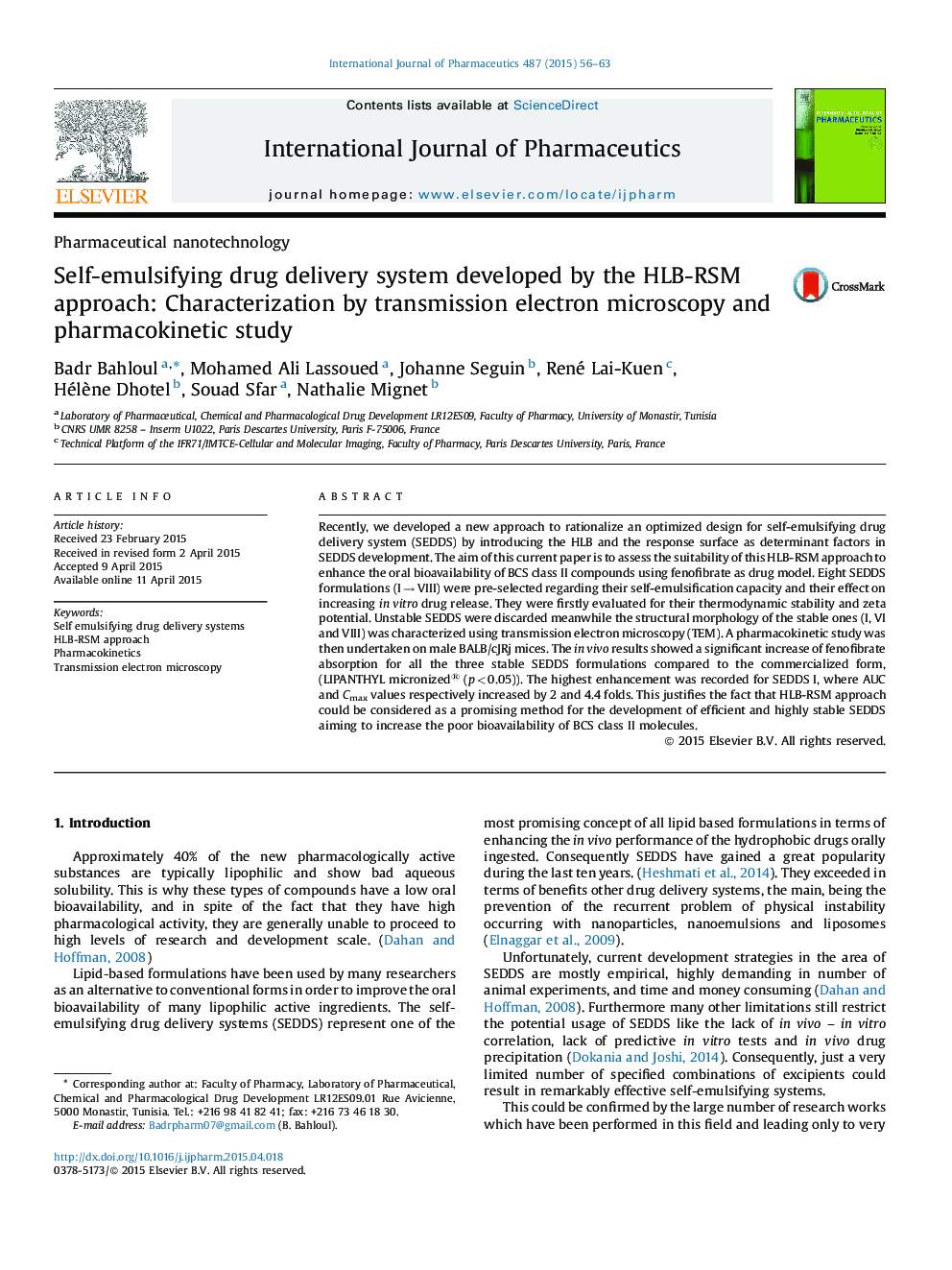| Article ID | Journal | Published Year | Pages | File Type |
|---|---|---|---|---|
| 5818808 | International Journal of Pharmaceutics | 2015 | 8 Pages |
Recently, we developed a new approach to rationalize an optimized design for self-emulsifying drug delivery system (SEDDS) by introducing the HLB and the response surface as determinant factors in SEDDS development. The aim of this current paper is to assess the suitability of this HLB-RSM approach to enhance the oral bioavailability of BCS class II compounds using fenofibrate as drug model. Eight SEDDS formulations (I â VIII) were pre-selected regarding their self-emulsification capacity and their effect on increasing in vitro drug release. They were firstly evaluated for their thermodynamic stability and zeta potential. Unstable SEDDS were discarded meanwhile the structural morphology of the stable ones (I, VI and VIII) was characterized using transmission electron microscopy (TEM). A pharmacokinetic study was then undertaken on male BALB/cJRj mices. The in vivo results showed a significant increase of fenofibrate absorption for all the three stable SEDDS formulations compared to the commercialized form, (LIPANTHYL micronized® (p < 0.05)). The highest enhancement was recorded for SEDDS I, where AUC and Cmax values respectively increased by 2 and 4.4 folds. This justifies the fact that HLB-RSM approach could be considered as a promising method for the development of efficient and highly stable SEDDS aiming to increase the poor bioavailability of BCS class II molecules.
Graphical abstractDownload high-res image (193KB)Download full-size image
